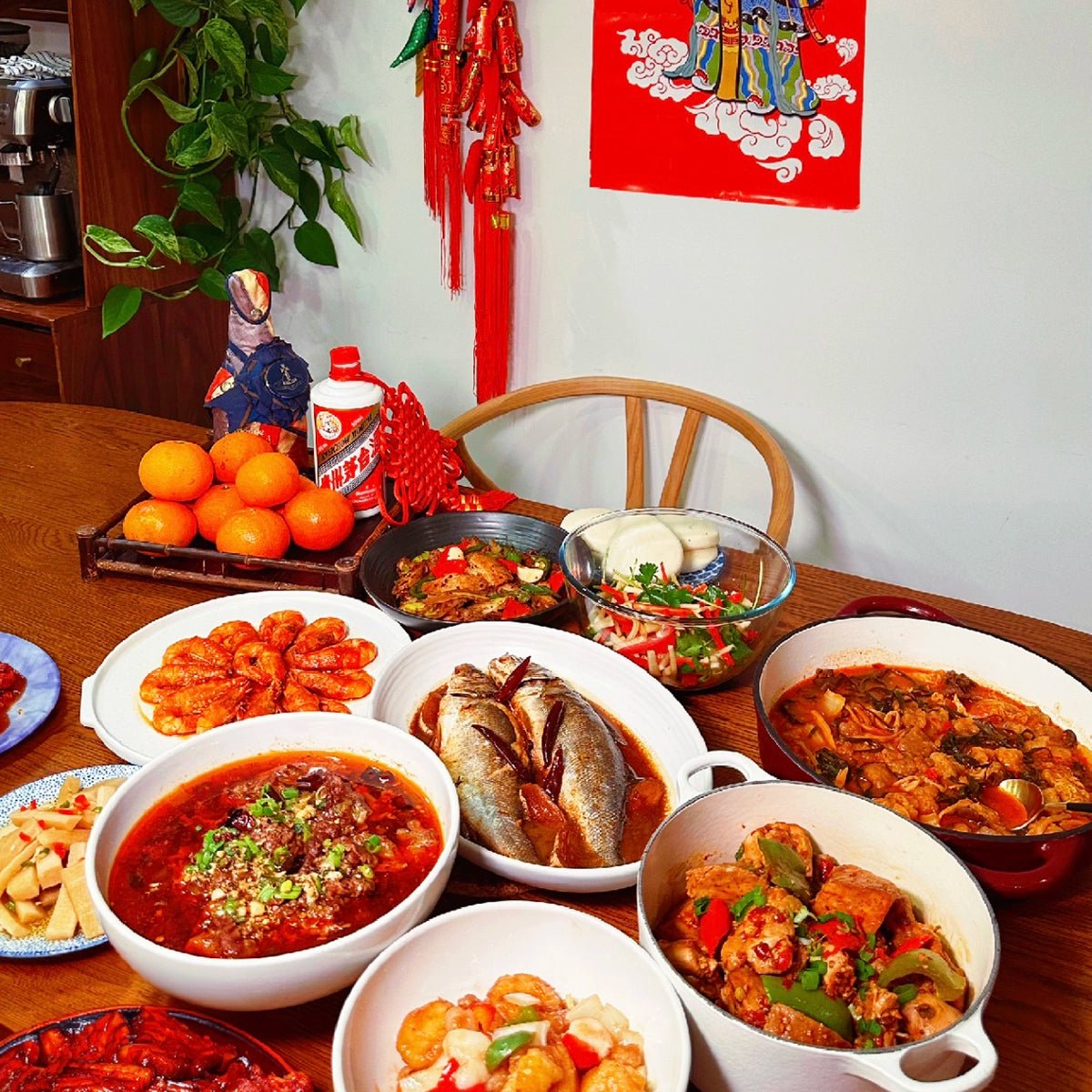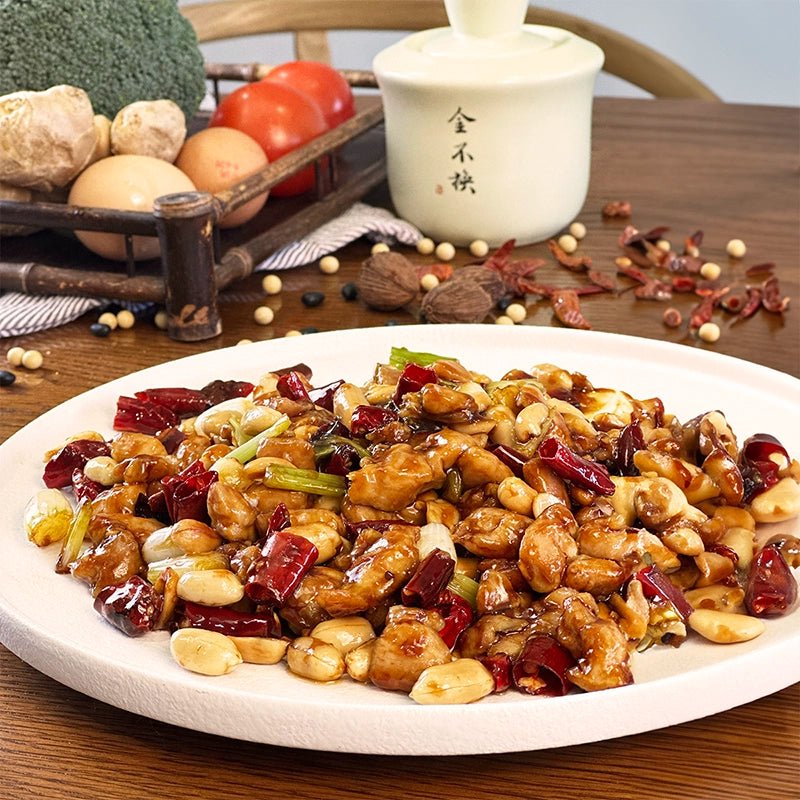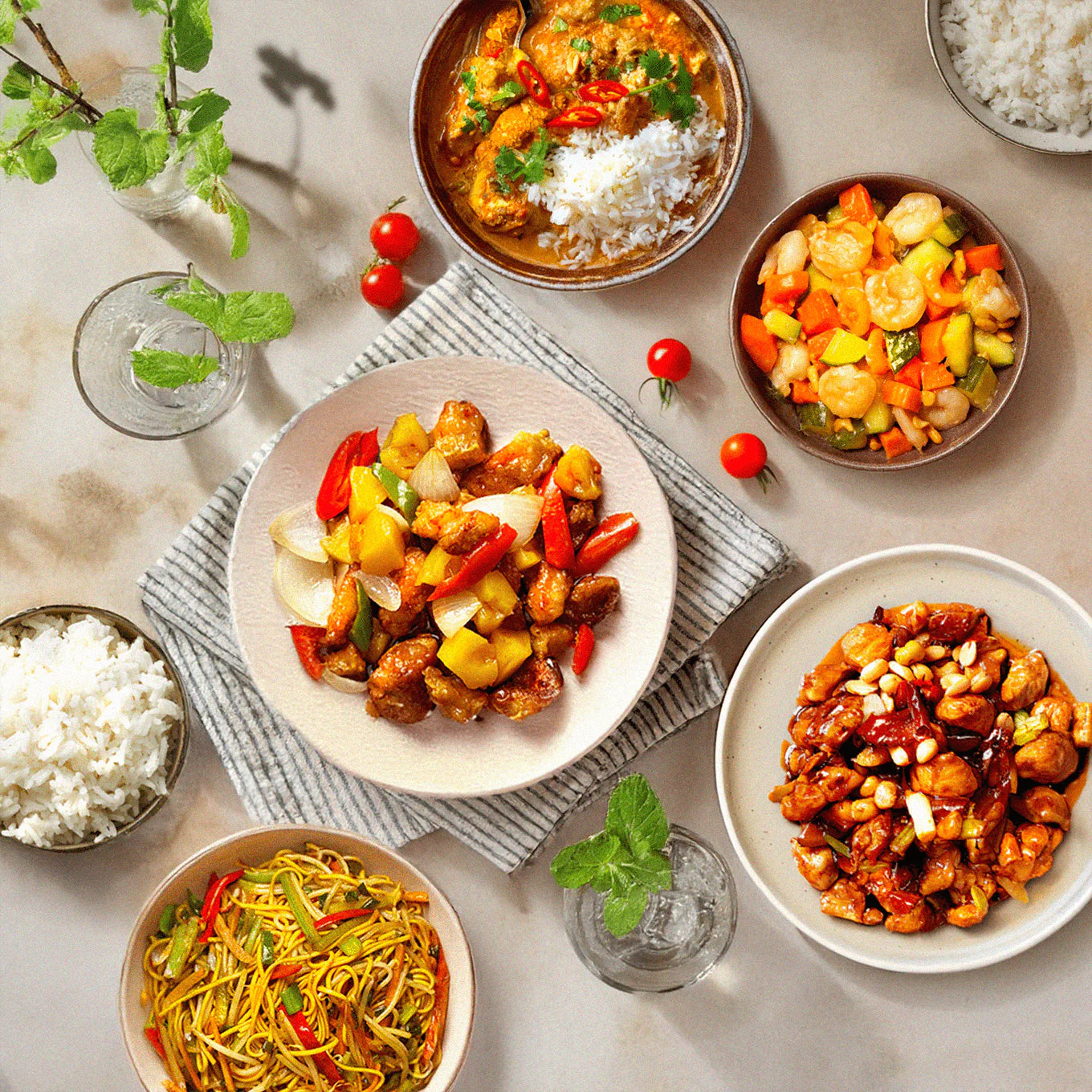Wowza!Blog

Wowza!Blog
Lucky Foods for Your Chinese New Year Feast
by Georgina Li on Jan 27 2024
As we step into the Year of the Dragon, join us at WowzaBox, where you can discover the 🏮perfect festive feast to ensure a year of luck and good health🧧. Because, you see, amidst the delicious flavours, the true essence of Chinese New Year lies in bringing family and friends together to share joy. Cheers to a year filled with fortune, happiness, and delectable memories – that's the spirit of Chinese New Year! 🥂🐉🎊

Wowza!Blog
Gong Bao Chicken Recipe: The Most Authentic Step-by-Step Guide
by Joshy Jin on Oct 21 2023
Discover the fascinating history and irresistible flavours of Gong Bao Chicken, a beloved Chinese dish. Ingredients: 300g chicken thigh, diced into 2cm cubes. 10g light soy sauce. Half an egg white. 2g salt. 10g Shaoxing Wine. 8g cornflour. 50ml vegetable oil.100g raw peanuts. Cooking oil for frying (amount as needed). 100g spring onions, chopped into 2cm pieces. 20g sun-dried chili pieces.3 tablespoons soy sauce...

Wowza!Blog
Guizhou Cuisine: Why I Love It So Much
by Joshy Jin on Jul 02 2023
Chinese food is renowned worldwide and considered the most popular cuisine. However, it's challenging to describe Chinese cuisine as a whole due to the vast array of regional variations. Each regional cuisine differs significantly in terms of ingredients, cooking techniques, and seasonings. Trying to encompass all of Chinese cuisine would be like attempting to describe Western cuisine—it simply can't be done. The officially recognised "big eight" cuisines; Sichuan, Fujian, Cantonese, Zhejiang, Shandong, Jiangsu, Anhui, and Hunan, showcase unique characteristics and enjoy immense popularity. However, beyond these, there are approximately 30 additional regional cuisines and today we'll explore one of them: Guizhou cuisine.
Guizhou [pronounced: gway·jow] is a landlocked province located in the southwest region of China. Its mountainous landscape and humid, warm climate contribute to an abundance of beautiful ingredients that perfectly complement its cooking style. However, there is one significant challenge—the scarcity of salt.
In mainland China, salt is primarily sourced from wells and lakes, but unfortunately, Guizhou lacks these resources. Consequently, the province relies on imported salt from other regions, and its mountainous terrain poses transportation difficulties. As a result, salt became a luxury that the general public in Guizhou couldn't afford. To counteract the risk of hyponatraemia and maintain adequate sodium levels, Guizhou people had to find alternative ways to season their food and make it tasty without relying on salt—an achievement that seemed impossible in any other cuisine. Yet, they accomplished it, and their success is truly remarkable. The people of Guizhou have developed numerous methods to season their food and increase sodium intake, with one particular approach becoming the hallmark of Guizhou cuisine: sour stock.
Sour stock is prepared by fermenting ingredients that are naturally high in sodium, resulting in a tangy flavour. It not only fulfils the sodium requirements but also imparts a delightful taste and depth to the dishes. Sour stock has become an essential part of the Guizhou people's diet. Considering that hyponatremia can lead to muscle weakness, there's a saying in Guizhou that serves as a testament to this:
‘If you go without sour stock for three days, you'll stumble when you walk.’
Various types of sour stock exist, with the main ingredients ranging from meat, fish, and seafood to tomatoes, vegetables, tofu, rice, and flour. Different seasonings are used for each ingredient, resulting in unique characteristics for each stock, which are then utilised in various ways. One of the most famous variations is the tomato sour stock, commonly referred to as red sour stock in Guizhou. It features wild cherry tomatoes that grow abundantly in the mountains of Guizhou. These tomatoes possess high acidity and aroma. They are minced, mixed with ginger, garlic, red chillies and Chinese spirit, then left to ferment with the help of yeast. The ageing process typically lasts a minimum of 45 days, but as with any aged product, the longer it matures, the better it tastes. This red stock boasts a rich and spicy flavour from the ginger and garlic, a kick from the chillies, a tanginess from the tomatoes and fermentation, and an aroma derived from the Chinese spirit. It pairs perfectly with light proteins such as fish and seafood.
In the early 2000s, restaurants specialising in Guizhou hot and sour fish stew began to appear in major cities across China. People were captivated by the intense flavours and enticing aroma delivered by the sour stock. Consequently, Guizhou fish stew restaurants soon became a common sight in every city.
Another unique and beloved aspect of Guizhou cuisine is the burnt chilli dip. When chilli peppers were introduced to Guizhou as decorative plants, their culinary potential was quickly realised. Chillies also contain sodium, vital for the locals.
Although chillies are extensively used in various Chinese cuisines, Guizhou people have a distinctive way of enjoying them that sets them apart from other regions. They roast or bake the chillies until they turn dark, then they crush them. This process reduces the heat while enhancing the aroma, but most importantly, it creates a smoky flavour that is highly addictive. Mixing the crushed chilli with garlic or soy sauce and adding a bit of stock from the fish stew results in the perfect dip for those seeking an extra kick.
When I first tried this dish, I was astounded by its richness and fragrance, despite it being a vegetable stock at its core. However, as I delved into the complex preparation process, everything started to fall into place. Sour stock is a common element in Chinese cuisine, with each region having its own version. Yet, none can compare to the depth and aroma found in Guizhou sour stock. This dish was one of the first additions to my menu because I wanted more people to experience a dish that not only tantalises the taste buds but also tells a compelling story—a story of the Guizhou people working with the challenges of their natural environment and transforming it into something extraordinary.
To keep our marketing team happy:), I have to include the following:
Why not order our Guizhou Hot and Sour Fish Stew and receive all of the prepared ingredients to cook this authentic Chinese dish at home, in under 15 mins. Our meal box arrives at your doorstep the next day and you can follow easy step by step instructions to home cook the best Chinese meal you have ever made!

Wowza!Blog
Embrace the WowzaBox Way: Savouring Sustainable Delights, One Bite at a Time
by Georgina Li on Jun 22 2023
We strive to use recyclable packaging materials as much as possible, with 95% of our packaging being recyclable now. Furthermore, we will continue to reduce and minimize our usage.

Wowza!Blog
Shian (鮮 xiān): The Foundation Stone of Chinese Cooking
by Joshy Jin on Jun 21 2023
Shian plays a vital role in Chinese cuisine, and Chinese chefs strive to preserve and elevate its unique flavour in their cooking. Glutamate naturally occurs in various ingredients like meat, fish, mushrooms, and vegetables. Furthermore, aged sauces and broths are used to intensify and enrich the taste even further.



